Master diploma thesis by Anais Alfieri analyses the contemporary urban development of Athens city focusing on the arcades (Stoas) of the Commercial Triangle downtown Athens posing the urgent request for their reactivation, in the post-covid era, as actual public spaces not only commercial hubs.
-text by the author
In the past five to ten years, while still recovering from the financial crisis of 2008 the city of Athens underwent a big shift in its tourist sector. Tourist arrivals to Athens more than doubled, as the capital became popular as an all-year-round destination and not only as a stopover to the Greek islands during the summer months. (Bellos 2019; akea 2020) The results are two sided. On the one hand, the tourist sector offers a great opportunity to recover from a long period of economic recession and creates new jobs (Bryan 2019). On the other hand, the economy increasingly rests upon a single sector, which is fragile. It bears around 1 million jobs in tourism (ibid.) and largely relies on foreign investors, who are buying off main parts of the city centre, evicting locals (Alderman 2019). This thesis specifically analyses the impact of current developments on the modern Greek Stoas of Athens’ Commercial Triangle. Located in the city centre, these modern passageways not only long served as important commercial points but also as semi-public spaces of encounter. Stoas flourished between the 1960s and ’80s but started downgrading by the 1990s and are now additionally influenced by the overall ongoing transformations.
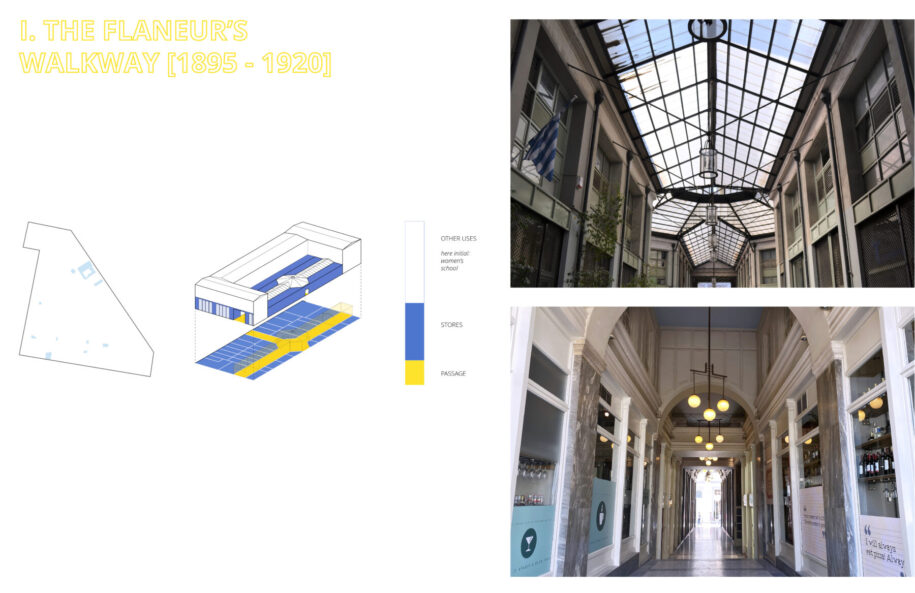
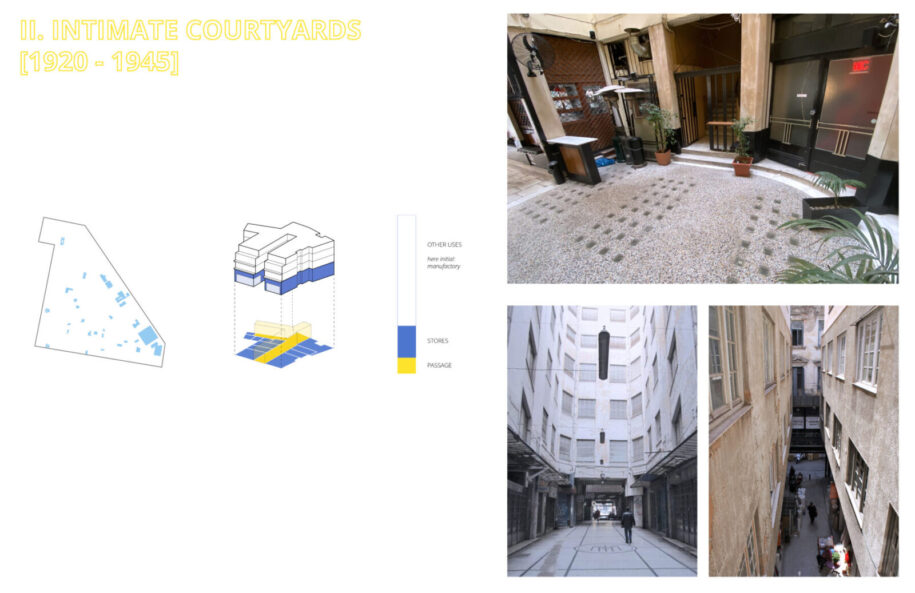
Timeline
As an overview to the research on Stoas the timeline presents the conversion of Stoas through time -from antiquity until today- and the external influences which put pressure on the city, consequently influencing the development of Stoas.
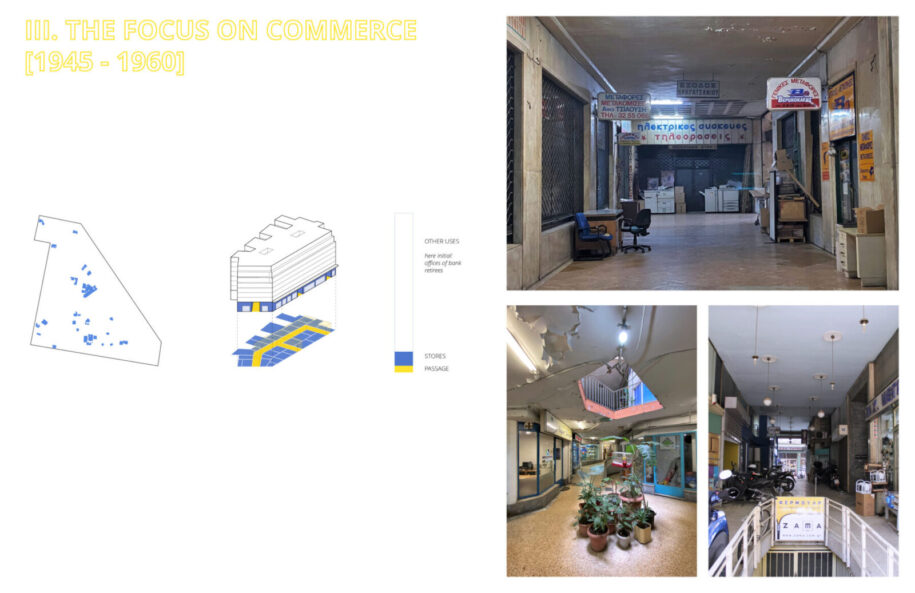
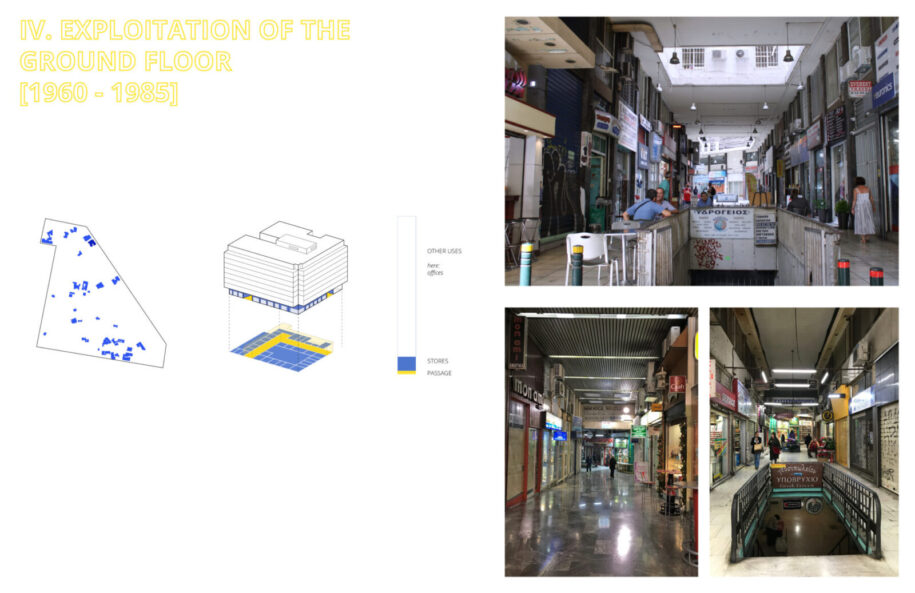
Context
In order to understand the formation of Stoas one first has to comprehend how Athens urbanity developed. The “Polykatoikiasation” resulting from the Antiparochi law, a rapid urbanisation, along with a lack of city planning, led to insufficient public space in the city and its agglomeration. Typologies, like the modern Stoa integrated in the ground floor of Polykatoikias, resulted out of that pressure, in order to compensate the lack of public and commercial space for pedestrians. The functional mix of the Polykatoikia, especially in its ground floors, enables in-between spaces, which cannot clearly be determined as public or private. As Dragonas (2014: 3) describes “The “osmosis” between private and public space is the greatest advantage of the anonymous Athenian apartment block.”
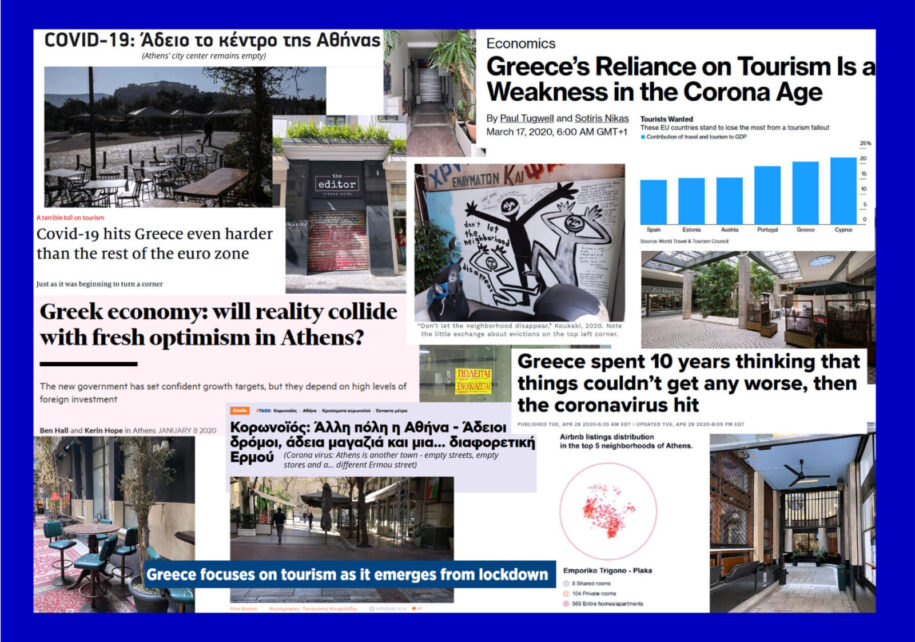
Analysis
Based on an intense analysis and mapping of the site and its Stoas as well as through interviews held with experts, store operators and users of Stoas it becomes clear, that Stoas are being highly influenced by current transformations of the city centre. Yet, while some Stoas are becoming part of the overall trend and thus becoming homogenised, exclusive and touristic spaces through a reuse focused on the hospitality sector, the less attractive structures are left abandoned and forgotten. When it comes to privatisation, the Stoa passage, once its most public part, suffers most of these transformations as it becomes unpassable to the public. This trend of privatising the passage for uses of the hospitality sector is especially questionable when it comes to the current crisis of COVID-19, which has proven the importance of maintaining (semi-)public space in our cities and that even the promising hospitality sector can be fragile, which is especially dangerous when it forms the largest economic sector.
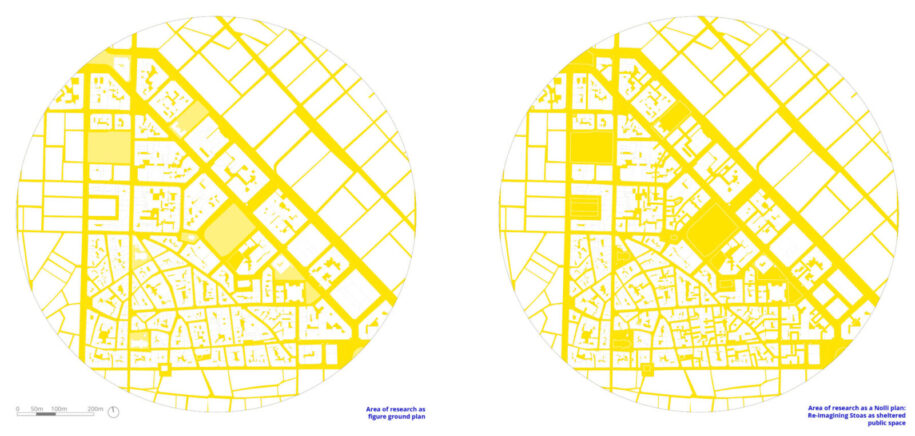
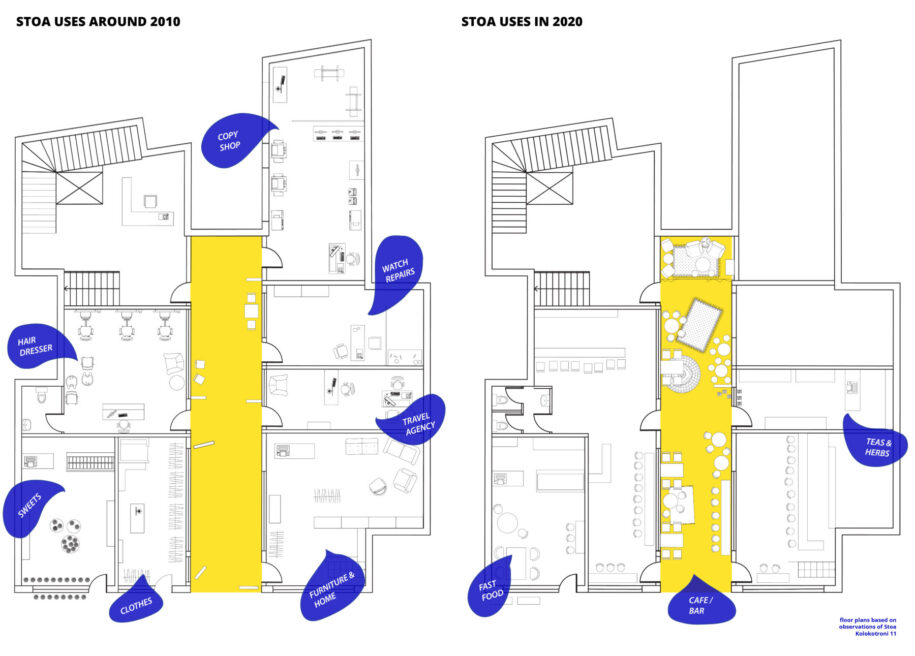
What makes Athens special, when compared to other European city centres is that it has always been defined by an extensive mix in uses and social classes. It belongs to one of the last European cities which has not yet completely been converted into a commercialised centre for tourism, ruled by big brands and franchise stores but is still partly defined by family owned retail, manufactories, and workshops. Athens should build on these advantages, which were gained from its complex historical development. Stoas might just be one instrument to keep this tradition and small economies alive, as well as to remind of the architectural epochs that Athens underwent and to create additional, small semi-public spaces – but it is definitely a good starting point to rethink current developments.
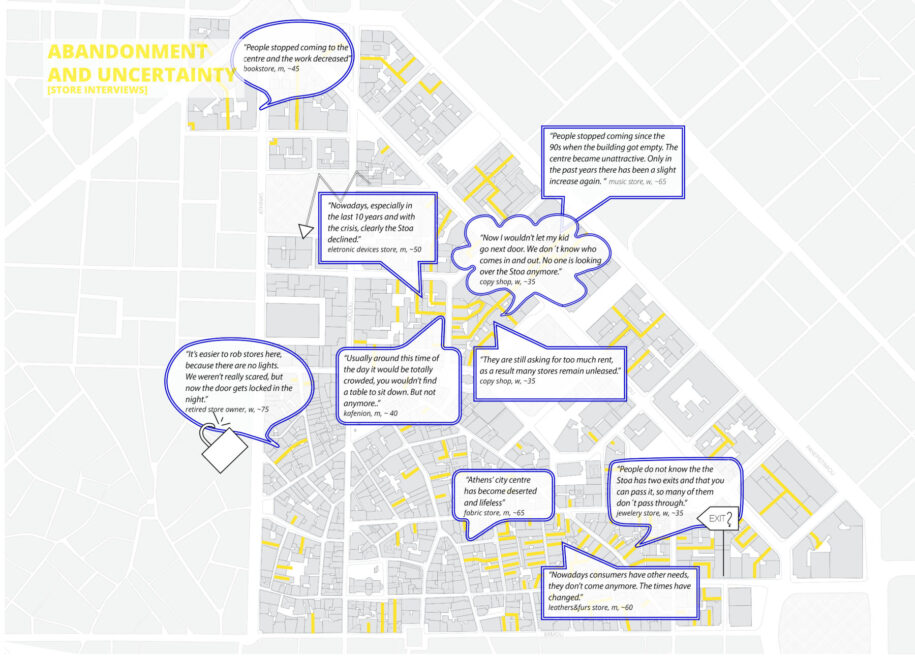
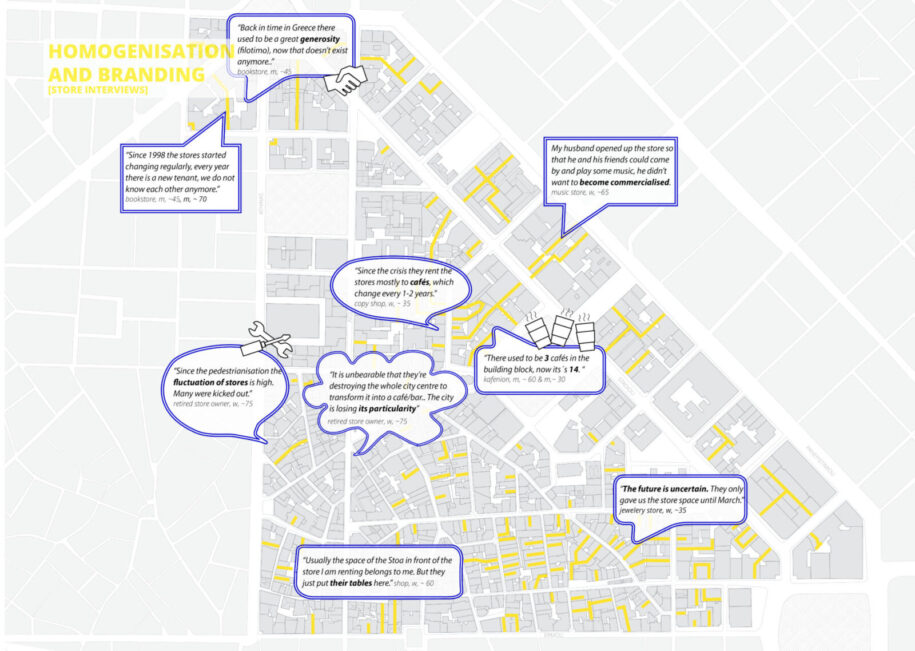
Proposals
The proposals are a call of action for multiple actors: the city, urban designers, residents, store operators and Stoa owners.
The transformation of Stoas is being overlooked and so attention must be given to the topic. The Municipality of Athens has to implement an overall concept on how to protect and re-enable Stoas as well as to facilitate the access to neglected ones. Stoa owners should get active and open up to new programs and actors, who could be situated in Stoas. Citizens should also act to protect these spaces against their abandonment or appropriation by private investors. Architects, urban designers and city planners should propose ideas and bring in their expertise for an alternative re-stoa-ration.
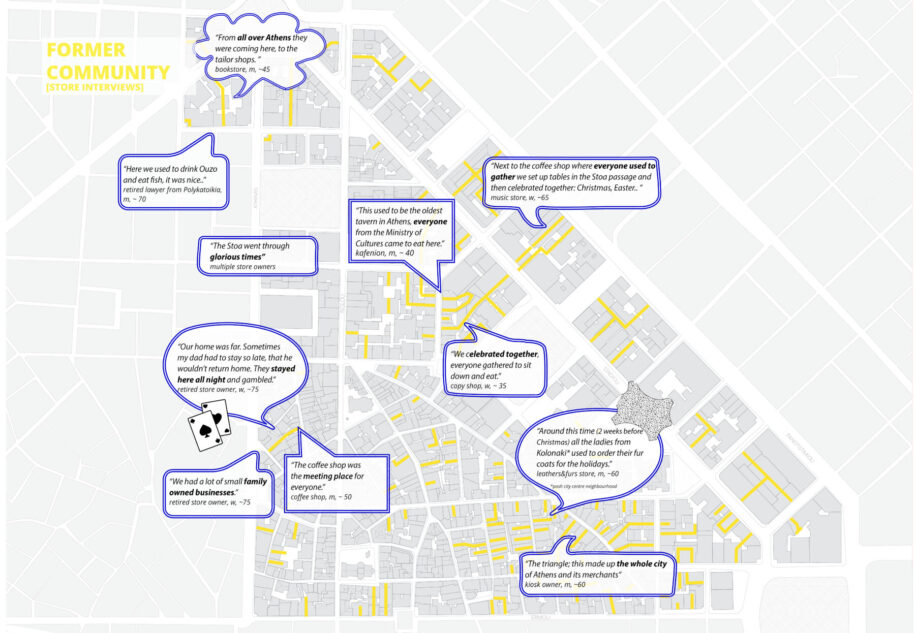
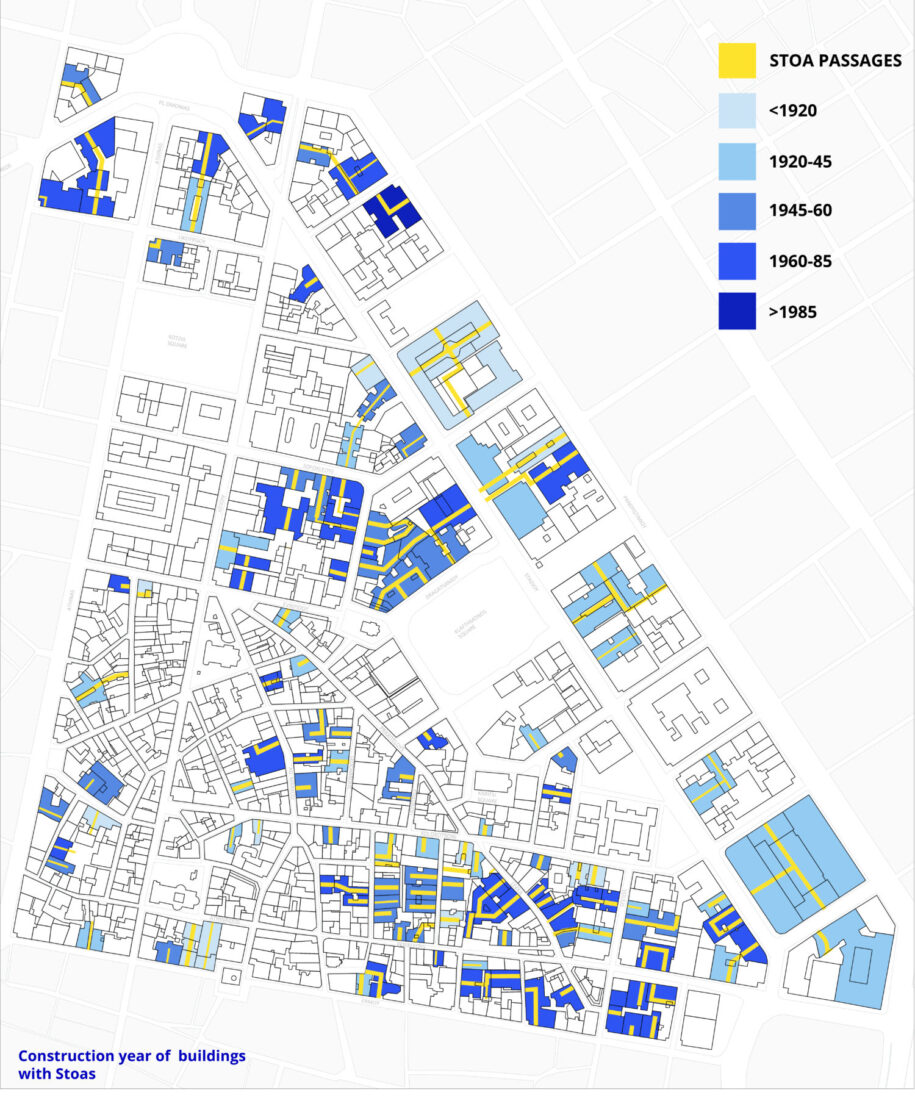
Facts & Credits
Project title Re-STOA-ring Athens. Opportunities and Risks of the Athenian Stoa
Student Anais Alfieri
Date August 2020
Course Master diploma thesis – M.Sc. Urban Design
Supervisors Philipp Misselwitz (Habitat Unit – Chair of International Urbanism and Design), Ali Saad (LIA – Laboratory for Integrative Architecture)
Institution Institute of Architecture, Technical University of Berlin (TU Berlin)
Η μεταπτυχιακή διπλωματική εργασία της Αναΐς Αλφιέρη εξετάζει την σύγχρονη αστική εξέλιξη της Αθήνας μέσα από το πρίσμα των χαρακτηριστικών στοών του εμπορικού τριγώνου της πρωτεύουσας θέτοντας επιτακτικά το αίτημα για μια ουσιαστική επανενεργοποίησή τους, στην μετά τη πανδημία εποχή, ως μέρος του δημόσιου χώρου της πόλης και όχι ως αποκλειστικούς πυρήνες εμπορίου και εστίασης.
-κείμενο από τη δημιουργό
Οι Στοές απεικονίζουν την πολεοδομική και αρχιτεκτονική εξέλιξη του κέντρου της Αθήνας απο την ίδρυση της νέας πόλης εώς τον 21ο αιώνα. Σε αντίθεση με άλλες πόλεις της Ευρώπης που αστικοποιήθηκαν στην εποχή του μοντερνισμού, στην Αθήνα με την ίδρυση της πολυκατοικίας εφαρμόστηκε αφενός η αρχιτεκτονική του μοντερνισμού, αφετέρου όμως δίχως την αντίστοιχη μοντέρνα πολεοδομία; με αποτέλεσμα να μην υπάρχει ο τυπικός διαχωρισμός χρήσεων, μεγάλοι δρόμοι ή μεγαλύτερες επιφάνειες πρασίνου ανάμεσα στα κτίρια.
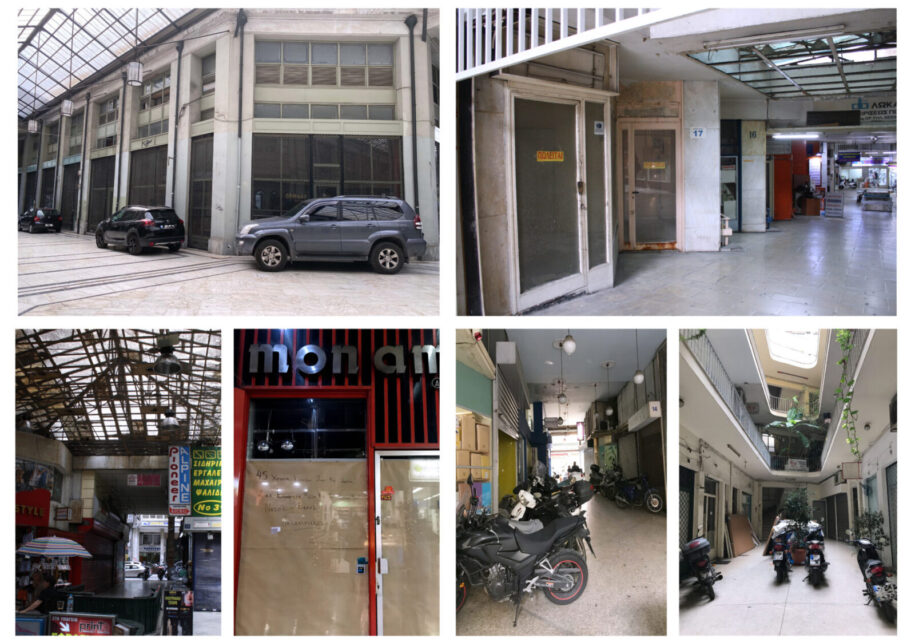
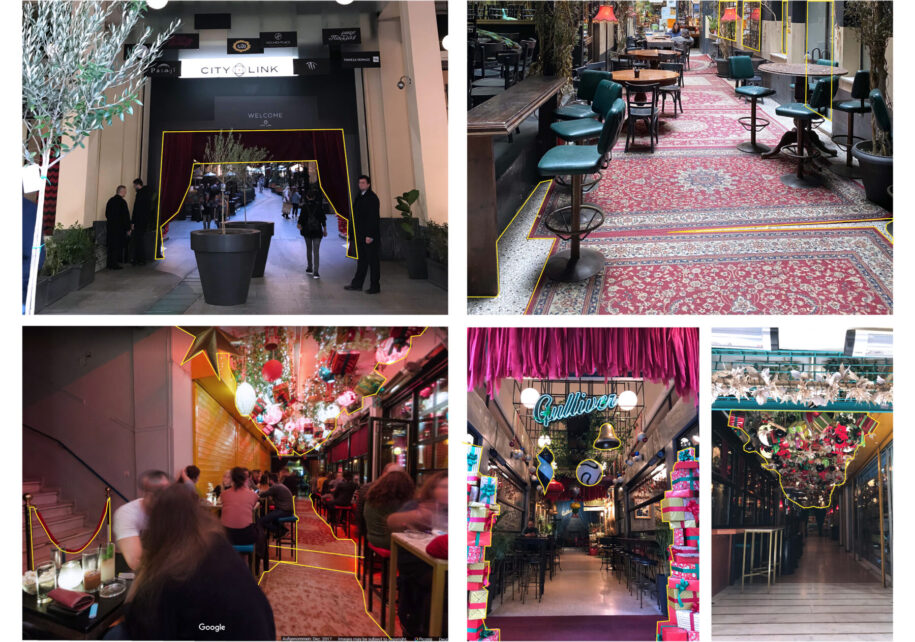
Συνεπώς, η ανάκγη για περισσότερο χώρο – είτε για εμπορική χρήση, είτε για χρήση (ήμι-)δημόσιου χώρου ή ως απλό πέρασμα – εξισορροπείτε μέσω δομών, όπως είναι οι Στοές. Παρότι οι Στοές εστίαζαν κυρίως στην δημιουργία νέου εμπορικού χώρου, κάτι που γίνεται αισθητό ειδικά προς το τέλος του 21ου αιώνα μέσω της τυπολογίας των Στοών και της ίδιας της Πολυκατοικίας, συγχρόνως ενεργοποιούσαν νησίδες συνάθροισης για εμπόρους και κατοίκους.
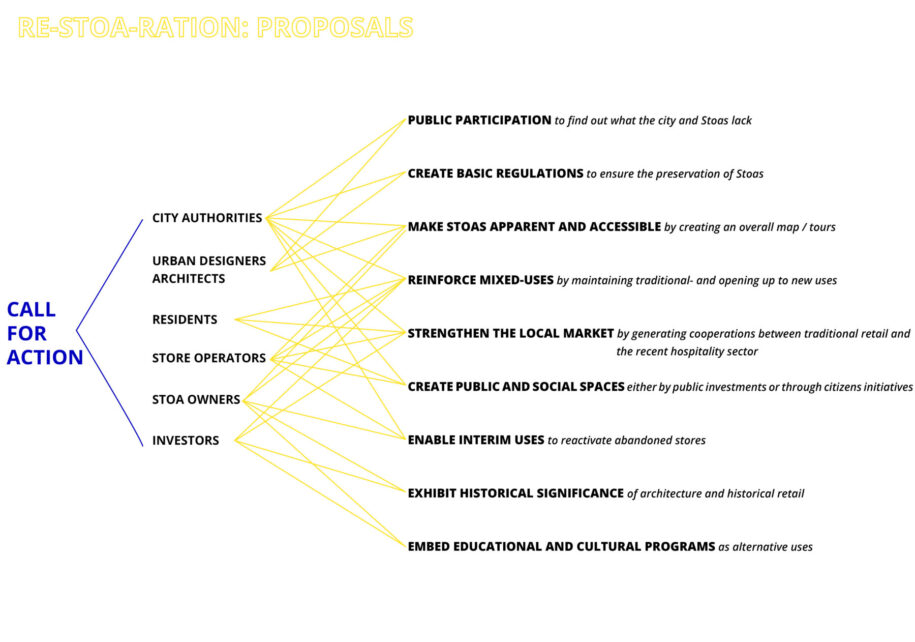
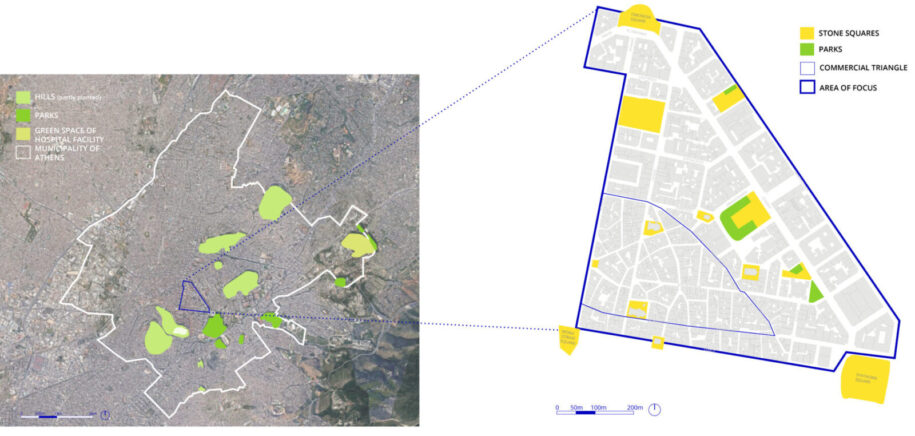
Αυτές οι ιδιαιτερότητες των διαφόρων μικτών και αυτοργανωμένων χρήσεων και συναντήσεων σήμερα χάνεται σιγά, σιγά με την ομογενοποίηση του εμπορικού κέντρου της Αθήνας μέσω της συγκέντρωσης στην εστίαση και τον τουρισμό. Πέρα απο την ανάλυση των Στοών η ιδέα αυτης της πτυχιακής ειναι να δώσει αφορμή να ξανασκεφτούμε την τωρινή ανάπτυξη της Αθήνας -μέσα απο τις Στοές- η οποία δεν θα έπρεπε να αποκλείει κανέναν, να είναι πιο βιώσιμη για τους κατοίκους αλλά και την οικονομία και να ενδυναμώνει τις παραδοσιακές χρήσεις της περιοχής.
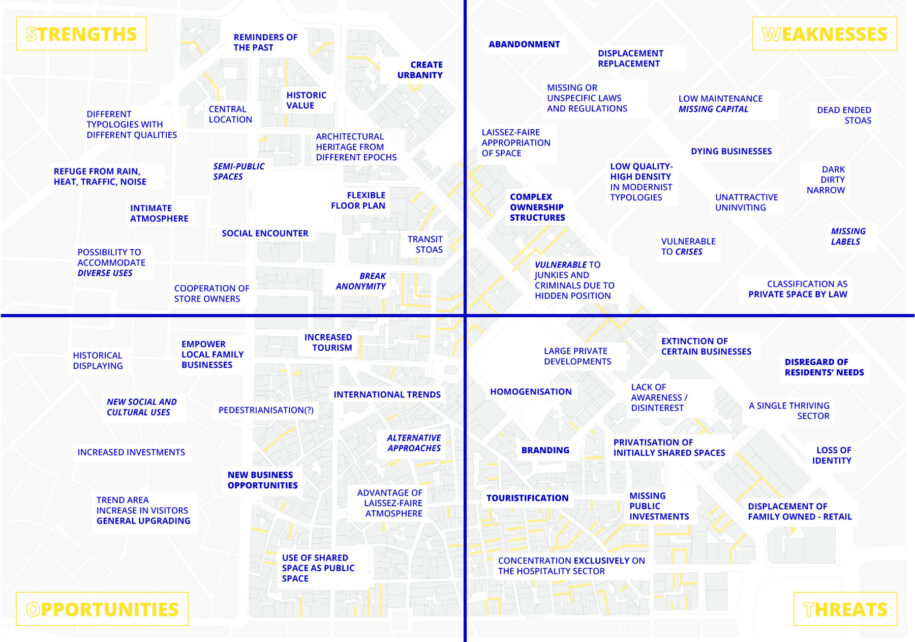
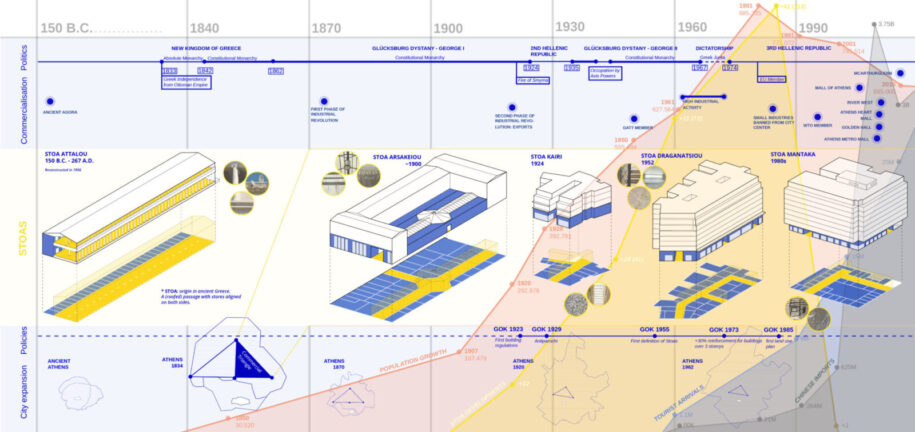
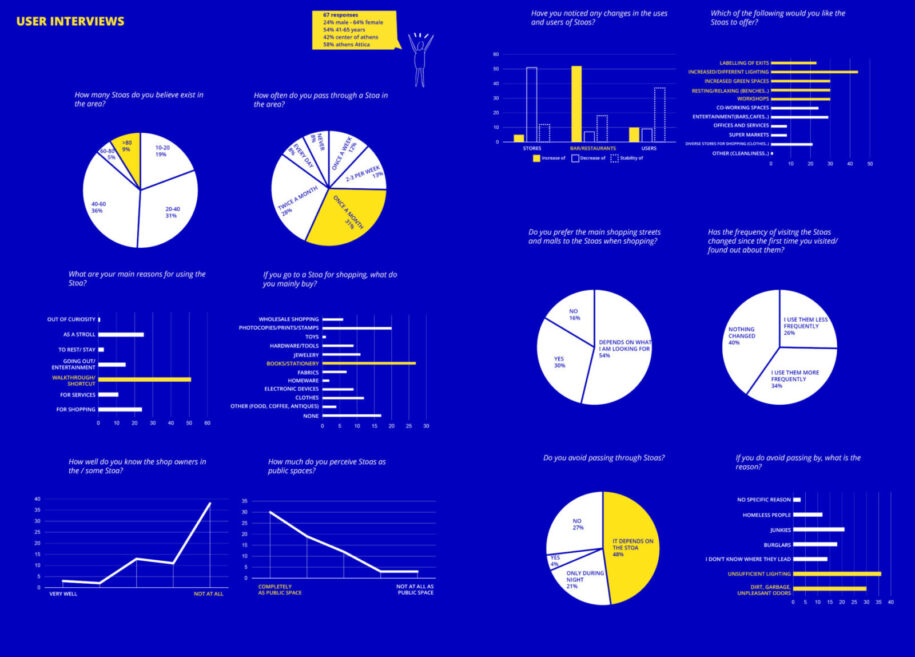
Αφού, οπώς μας έδειξε η πανδημία του κοροναΐου, ο κλάδος της εστίασης είναι ο πρώτος που κλείνει, γιατί να είναι αυτός ο μόνος κλάδος που αναβιώνει τις στοές και να μην υπάρχουν πολλαπλές και πιο δημόσιες χρήσεις?
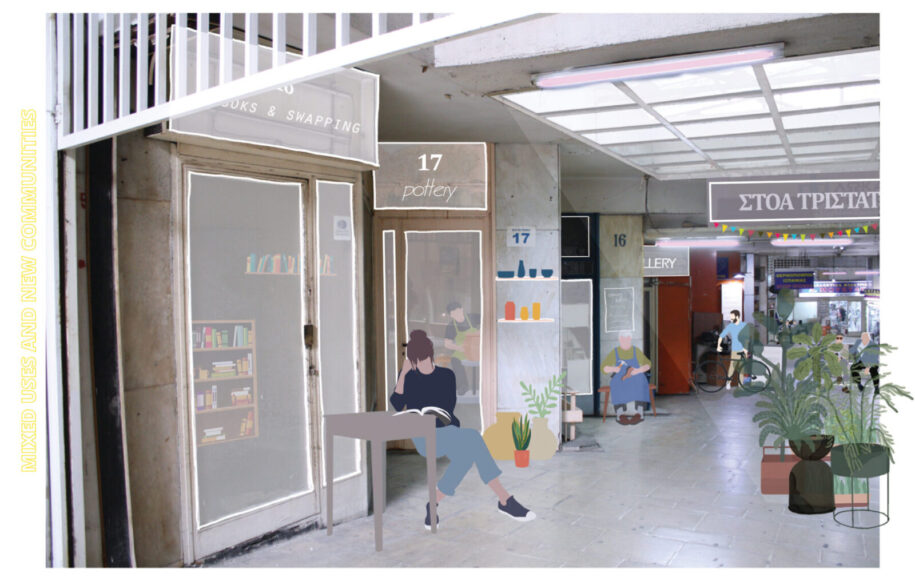
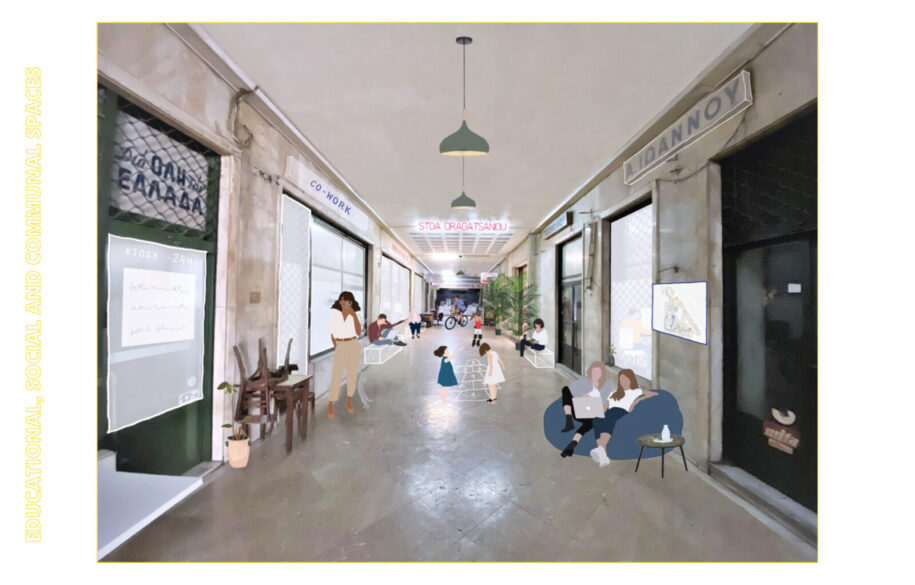
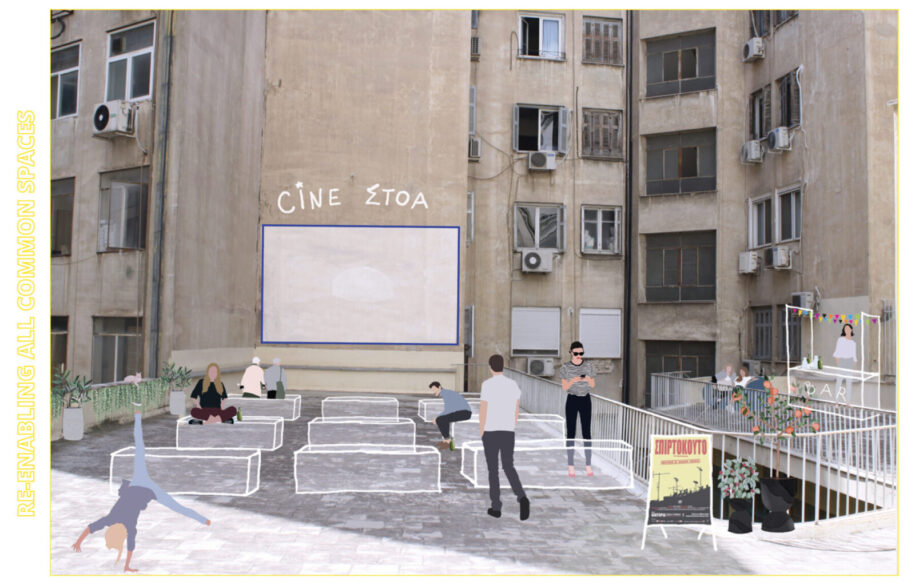
Sources
_ akea (2020): The Great Walk: Ennoblement, Touristification and the right to the city. (original in Greek: ΜεγάλοςΠερίπατος: Εξευγενισμός, τουριστικοποίηση και το δικαίωμα στην πόλη.) Online available on: https://akea2011.com/2020/07/15/megalosperipatosgentrification/ (accessed: 20.07.20)
_ Alderman, Liz (2019): In Greece, an economic revival fueled by ‘Golden Visas’ and tourism. Online available on: https://www.nytimes.com/2019/03/20/business/greece-economy-golden-visas-tourism.html (accessed: 20.07.20)
_ Bellos, Ilias (2019): Visitors to Athens have Doubled in Six Years. Online available on: https://www.greece-is.com/news/visitors-to-athens-have-doubled-in-six-years/ (accessed: 09.04.20)
_ Bryan, Claire (2019): Tourism’s effect on the Greek economy. Online available on: https://borgenproject.org/tourisms-effect-on-the-greek-economy/ (accessed: 16.07.20)
_ Dragonas, Panos (2014): After the apartment block. In: Domes 02/14. Athens, pp. 20-35
Read the entire thesis, here!
Διαβάστε ολόκληρη την εργασία, εδώ!
READ ALSO: Center of Memory and Agritourism in Polifitou Lake | Diploma Thesis by Giorgos Sketopoulos